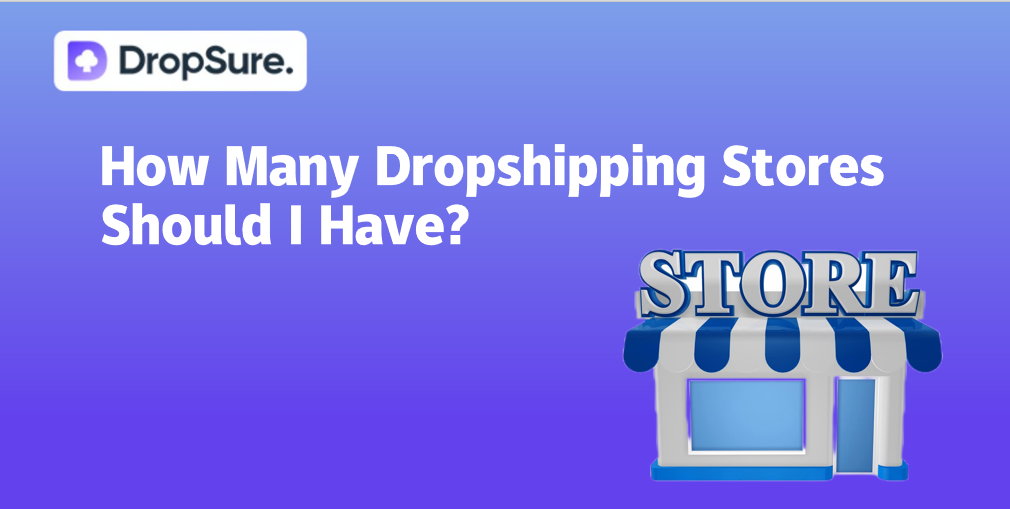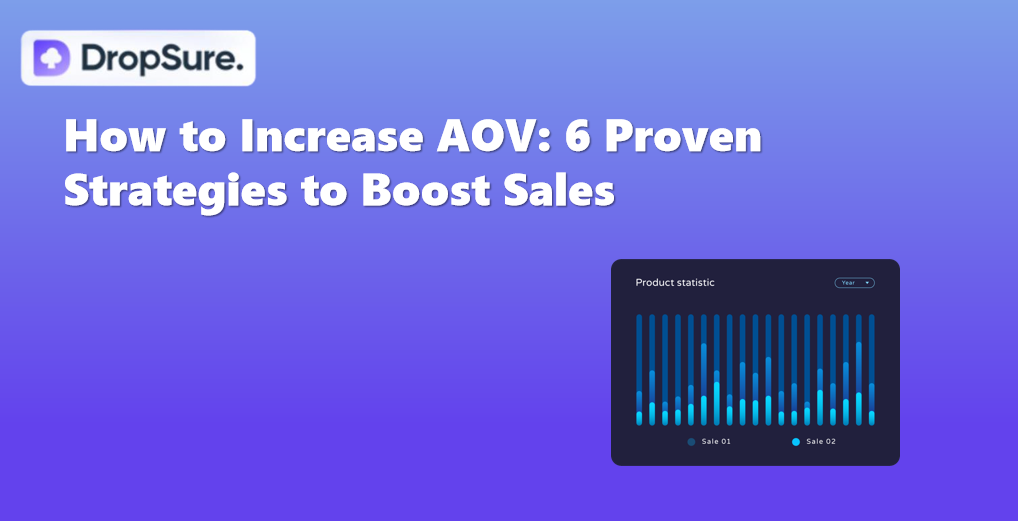Before we get into the actual tactics, let’s make sure we understand what SEO really is.
SEO stands for Search Engine Optimization, and in simple terms, it means: how to make your store or website easier to find on Google.
The higher you rank in search results, the more likely you are to get organic traffic—people who find you by searching, without you spending a dime on ads.
This is especially important for dropshipping. Unlike traditional stores that rely on foot traffic or returning customers, dropshipping relies almost entirely on online visibility.
Whether people can find your store online basically determines whether you get any orders.
Even with a tight budget, SEO can help you build a super cost-effective customer acquisition channel.As more and more people jump into the dropshipping game, just launching a store and waiting for customers to show up is no longer realistic.
You need to treat SEO like your fishing rod—casting it out to actively catch traffic.
But don’t get it wrong: SEO is not just about stuffing a few keywords. It’s a full strategy, and every part matters. For example:
- Picking the right keywords so people can actually find you;
- Clear website structure, so users instantly understand where to go;
- Valuable, authentic content—not random fluff;
- Fast-loading pages, so customers don’t get annoyed and leave;
- External links and social shares—those little “credibility points” that search engines notice.One thing that’s super easy to overlook: Don’t ignore small website issues.
Even just a broken page or duplicated title can make search engines think your site is “unprofessional,” which tanks your rankings.Bottom line: SEO isn’t a one-trick hack based on keyword stuffing. It’s about holistic optimization—making your store both trustworthy and easy to find.
Put in the work, and over time you’ll see that organic traffic becomes the long-term battery for your store, keeping it running steady and strong.
Beginner’s Guide to Dropshipping SEO
Before diving into techniques, let’s get the concept of SEO straight.
SEO stands for Search Engine Optimization, and simply put, it means: how to make your store or website easier to find on Google.
The higher you rank in search results, the more organic traffic you get—that’s traffic you don’t have to pay for, because people find you on their own just by searching.
This is especially important for dropshipping. Unlike traditional stores that rely on walk-in customers or repeat buyers, dropshipping businesses depend heavily on online exposure.
Whether your store can be found basically determines whether you’ll get orders or not.
Even if your budget is tight, SEO can help you build an extremely cost-effective way to bring in customers.As more people flood into the dropshipping space, simply opening a store and waiting for traffic won’t cut it anymore.
You need to use SEO as your fishing rod—to actively go out there and catch traffic.
But don’t get it twisted—SEO isn’t just about “throwing in a few keywords.”
It’s a whole strategy, and every part of it matters. For example:
- Choosing the right keywords so the right customers can find you;
- Structuring your website clearly so users instantly get how it works;
- Creating real, valuable content—not filler nonsense;
- Making sure your pages load fast so users don’t bounce;
- Earning backlinks and getting social shares—those reputation boosters search engines love.One thing people often overlook—don’t ignore small issues on your site.
Even a broken page or duplicate title can make Google think your site is “unprofessional,” which tanks your rankings.In short, SEO isn’t some one-shot keyword trick—it’s a full-on optimization system that makes your store look reliable and easy to discover.
If you take it seriously and do it right, you’ll find that organic traffic becomes the long-term battery of your store—the more you build it up, the steadier your business grows.
Basic Concepts of SEO
To get good at SEO, the first step is to really understand the fundamentals. So let’s start with the core question:
How do search engines decide where your website ranks?
They look at a lot of different factors, but here are the key ones you absolutely need to know:Optimize your on-page content
Don’t try to get by with a few lazy lines of text—Google favors pages with 350–500 words of content that stick to a clear topic.
But that doesn’t mean writing a bunch of fluff or word vomit. Your content should be targeted and address real questions your customers care about.
Strategically place your keywords
Naturally work in the keywords your customers are likely to search for (like “men’s summer t-shirts” or “privacy shade net”).
Also, add internal links—like linking from your homepage to a category page—so search engines can better understand your site’s structure and what’s important.
But don’t go overboard. Keywords should feel natural, not forced. If your content starts sounding like a robot chanting keywords, it’ll hurt both your SEO and your readers’ brains.Improve content readability
Yes, SEO seems like it’s “written for robots,” but the best content pleases both algorithms and humans.
When you write, ask yourself: “Would my customer want to keep reading this? Can they find what they’re looking for here?”
And avoid those expandable text boxes that say “click to read more.” If content is hidden, search engines might not crawl it. No matter how great your writing is, it might go unseen.
Optimize page structure
Whether it’s a product description, a blog post, or a FAQ page, make sure your layout is clean, your images are high-quality, and your key info is easy to find.
For product descriptions, place them just below the item, and match them with attractive visuals.
Don’t dump a big block of boring text that makes people want to close the page.Ask Yourself These 6 Questions Before You Write Anything
Who will read this content? (What’s the customer’s identity, age, shopping intent?)
What type of content is this? (A product description? A tutorial? A guide?)
When will the customer see this? (While browsing new arrivals? Comparing prices? Right before buying?)
What should they do after reading? (Click through? Place an order? Add to favorites?)
How does this content actually help them? (What pain point does it solve?)
Why should they care? (What makes this content worth their attention right now?)
Title Tags
Title tags play a crucial role in SEO—they’re like the “doorplate” of a webpage and are often the first thing users see in search results. Keep it under 55 characters, tightly focused on the topic and keywords, but written naturally to be engaging. A well-crafted title can drive clicks. For example, “Best-Selling Outdoor Privacy Screen of 2025” is far more effective than a plain product name.
Title tags don’t just show up in search results—they also appear in bookmarks, browser hover text, and browsing history. So they need to be clear and accurate, giving users a good sense of what the page is about, helping retain visitors.
The use of linked keywords is also key, but beginners often overdo it. Stuffing keywords makes the content hard to read and may get penalized by search engines. The smart approach is to insert keyword links naturally, in moderate amounts, and diversify link destinations—including homepage, content pages, and product pages. This improves user experience and boosts SEO rankings.
SEO is a long-term game. It takes consistent content updates, data monitoring, and staying aligned with search engine algorithm changes. Especially in 2025, Google is putting more weight on mobile experience and page speed. Only by keeping up your optimization efforts can SEO continue to bring in steady, organic traffic and support the long-term growth of your store.
Meta Description
The meta description is the short snippet of text that appears below the title in search results. While it doesn’t directly affect your rankings, it plays a critical role in attracting clicks. Ideally, a meta description should be 120 to 155 characters long, concise yet impactful. It should align with the page content and clearly tell potential visitors what value they’ll get after clicking—whether it’s solving a problem, getting a deal, or discovering something unique.
For dropshipping stores, writing compelling meta descriptions is especially important because it directly influences click-through rates (CTR). You can include enticing offers like limited-time discounts, low-price guarantees, free shipping, or bonus gifts to spark buying interest. It also helps to analyze your competitors’ meta descriptions—search relevant keywords on Google and observe how top-ranking pages attract clicks. Then, combine those insights with your own selling points to craft stronger, more competitive descriptions.
Internal Links
Internal links are a cornerstone of effective SEO—without them, it’s nearly impossible to boost your site’s rankings. These are links that connect one page of your website to another, and shouldn’t be confused with external links, which point to other websites. For dropshipping stores, internal links are especially valuable because they keep visitors browsing longer, improving user experience and helping search engines better understand your site’s structure.
Internal links usually have a “do follow” tag, telling search engine bots to crawl and index the linked pages. When used wisely, they signal to Google which pages and keywords are most important, boosting the authority and ranking potential of those pages.
However, don’t just scatter links everywhere. Too many internal links dilute the ranking power each link passes. For example, if a page has two internal links, each might get 50% of the link value; but if it has four, each gets only 25%. Also, links placed higher up on the page carry more weight and are more likely to be noticed by search engines.
In short, internal links are a powerful tool for boosting both your SEO and user experience—but only if used strategically. Smart placement and moderate quantity are key to maximizing their impact.
Backlinks in SEO
Backlinks are super important in dropshipping SEO—they directly affect your website’s traffic and rankings. Simply put, backlinks are links from other websites pointing to your site, which can bring more potential buyers to your pages. But here’s a big trap: if you blindly buy irrelevant or low-quality backlinks, search engines will likely see it as cheating and may punish your site by lowering your rankings.
There are different types of backlinks. “Nofollow” links don’t pass ranking value and search engine bots tend to ignore them. “Dofollow” links, on the other hand, do pass link equity and help boost your rankings. Then there are “unnatural” links, like paid or sponsored links, which don’t really count for ranking and might even bring risks. In contrast, “natural” backlinks—those given voluntarily by others mentioning your brand or site—are the real SEO boosters.
The most important rule: never overuse keywords in backlinks or create unnatural-looking links. Search engines treat that as manipulation. Quality beats quantity every time—a single high-quality, relevant backlink is worth way more than dozens of random junk links. Remember, SEO is a marathon, not a sprint; steady, legit link building wins in the long run for dropshipping stores.
External Links in SEO
External links can also play a useful role in dropshipping SEO. Think of them like citations in a blog post that guide readers to helpful external websites. For example, if you write a product usage guide and want to give readers more in-depth info, you can add a few external links to authoritative resources or industry reports. The key is that external links must truly benefit your visitors—otherwise, they just distract readers and might be seen as spam by algorithms.
However, never place external links randomly on your shopping cart or product detail pages—these are critical places for conversions. If visitors click away, it’s hard to get them back to buy. External links work best on content pages like blogs, tutorials, or FAQs, where you’re legitimately offering extra references or extended info. Always prioritize stable, authoritative sites closely related to your topic, so readers gain value and search engines recognize your page quality.
Canonical Links in SEO
Canonical links are essential for dropshipping SEO because they help avoid duplicate content issues. When you have multiple URLs showing similar or identical content—like product variations or filtered pages—canonical tags tell search engines which URL is the “master” version that should be indexed and ranked.
Using canonical tags correctly ensures search engines don’t split ranking signals between duplicate pages, which could otherwise hurt your SEO performance. It also helps consolidate link equity and keeps your site structure clean in the eyes of Google.
Make sure each page has a self-referencing canonical tag by default, and when you create duplicate or very similar content, point their canonical tags to the original source. This simple step can save you from a lot of ranking headaches down the line.
Sitemaps and More Dropshipping SEO Tips
Understanding how to develop an optimized sitemap for your website is essential. Simply put, a sitemap is a list of all the pages that search engines should recognize, ranging from category pages to individual product pages. There are various ways to create a sitemap, such as using an XML feed. Make sure your sitemap does not include any pages that return 301 redirects or 404 errors.
The Role of Pagination in SEO
If you need to display a series of pages on your website, you may need to use pagination. For example, in a typical product category page, if there are many products displayed, you need to split them into multiple pages. This is where canonical tags come into play. Note that Google now allows the use of rel=”prev” and rel=”next” in pagination sequences to guide site navigation through a series of pages without requiring any special site audits.
Schema SEO Guide
Schema is a document jointly developed by all major search engines. It contains many useful examples showing how to help search engines recognize your pages and when to use which type of code.
By using Schema markup, you can help search engines better understand the specific content of your website. Additionally, it can display to users what they will find on a particular page. Many dropshippers still overlook using Schema, so you can leverage it to gain an advantage and make your website stand out.
Using Data Feeds
To effectively utilize SEO for dropshipping, you need to understand your data sources. You must know how to handle all data obtained from 12 Tips to Find a Dropshipping Supplier in 2024, such as product descriptions and photos. Avoid simple copy-pasting, as duplicate content can lead to penalties. Please recreate content and use original text as much as possible.
Optimizing Image Titles
When handling image titles, don’t forget SEO optimization. The title text should not be identical to the alt tags or the image file names. Generally, avoid overusing keywords to prevent penalties from search engine algorithms.
Pay Attention to Product Descriptions
Here’s a reminder again to avoid duplicate content. If you are in the dropshipping business, you can get product information from suppliers, but that doesn’t mean you don’t need to create original descriptions. Spend some effort to make them unique—that will give you a significant competitive advantage. Carefully revise your descriptions to ensure they are error-free, clearly and completely describe the product information, and directly highlight the product’s benefits.
For product specifications, try to find a unique way to express them. For example, rewrite the description of product features, adjust their order, or change some wording.Expand Your Knowledge
Market algorithms change rapidly, and you need to keep up with these updates. To deepen your understanding of SEO and other aspects of dropshipping, you can attend various courses. Please choose courses based on the platforms you plan to use. For instance, some courses specifically target Oberlo SEO, or more general learning programs like Udemy dropshipping courses.
What Not to Do
There are many tricks and tips on the market that claim to boost your website ranking faster. But these are often bad advice because they can get your site penalized. If that happens, it might take years to recover your original ranking. If you don’t want your dropshipping store to lose its search rankings, please avoid the following so-called “black hat dropshipping” methods:
- Do not use tools to automatically post your website links across various online communities.
- Do not use “do follow” links in sponsored posts.
- Do not use link farms or link exchanges.
- Do not post comments made up entirely of dropshipping keywords.
Conclusion
As you can see, using SEO in dropshipping marketing strategies is not easy, but it’s not rocket science either. The information above will help beginners successfully promote their sites and improve SEO skills. Be patient, and you’ll soon see your website traffic grow.
However, SEO optimization starts from the very beginning of website building. A dropshipping store with a clear structure and easy navigation is usually more attractive to SEO efforts than a slow, clunky site. Using our [tool/resource], you can build an unparalleled dropshipping store and fully leverage your website’s SEO potential.

 18 min read
18 min read








